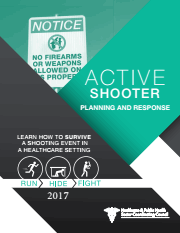Highlighted titles from the newest additions to the HSL Collection. You can find the print on the shelf, to the right, when entering the library. A full list of new titles can be found here or check the New Books shelf, for all new print items, by the lounge area.
Being mortal : medicine and what matters in the end, by Atul Gawande.
“In his bestselling books, Atul Gawande, a practicing surgeon, has fearlessly revealed the struggles of his profession. Now he examines its ultimate limitations and failures-in his own practices as well as others’-as life draws to a close. Riveting, honest, and humane, Being Mortal shows how the ultimate goal is not a good death but a good life-all the way to the very end.” — Amazon |
WB310 G284b 2014 |
No apparent distress : a doctor’s coming-of-age on the front lines of American medicine, by Rachel Pearson.
“A brutally frank memoir about doctors and patients in a health care system that puts the poor at risk. In medical charts, the term “N.A.D.” (No Apparent Distress) is used for patients who appear stable. The phrase also aptly describes America’s medical system when it comes to treating the underprivileged. Medical students learn on the bodies of the poor―and the poor suffer from their mistakes.” — Amazon |
W18 P362n 2017 |
The history of cesarean section, by Samuel Lurie.
“The fascinating issue of operative opening of the uterus and delivering the fetus known today as cesarean section has intrigued humankind for ages. This book is the most comprehensive text on the fascinating history of cesarean section. It includes the origin of the eponym and describes many myths from ancient Greek, Roman, Persian and medieval cultures. The first documents regarding cesarean delivery arise in ancient legal texts: a cuneiform tablet dealing with the adoption of a small boy during the 23rd year of the renowned King Hammurabi of Babylon (1795-1750 BC), “Lex Regia” proclaimed by Numa Pompilius, an ancient Roman King (716-673 BC), and Mishna, the collection of ancient Jewish laws (2nd century BC – 6th century AD). The book includes a description of the oldest known drawing of a cesarean section that appears in the 1307 AD version of the book “Al-Athár-ul- Bákiya” by Albiruni.” — Nova Science Publishers |
WQ430 L967h 2013 |
Translational research in coronary artery disease : pathophysiology to treatment, edited by Wilbert S. Aronow and John Arthur McClung (NYMC Authors).
“Translational Research in Coronary Artery Disease: Pathophysiology to Treatment covers the entire spectrum of basic science, genetics, drug treatment, and interventions for coronary artery disease. With an emphasis on vascular biology, this reference fully explains the fundamental aspects of coronary artery disease pathophysiology.” — Amazon |
WG300 T772 2016 |
Active shooter : planning and response, by Healthcare and Public Health Sector Coordinating Council.
“The Active Shooter Planning and Response Guide takes an in-depth look at the 4-phases of emergency management; mitigation, preparedness response and recovery and offers step by step guidance to assist healthcare facilities in active shooter planning and response. Designed with input from industry experts and incorporating the latest recommendations and techniques used in active shooter planning and response, this guide is a must read for all healthcare facilities..” — p. 2 |
Online |
USMLE step 1 made ridiculously simple, by Andreas Carl.
“A lightning-fast review of Pathology, Microbiology, Pharmacology, Biochemistry, Anatomy, Physiology, and Social Science, all in chart format. Updated of the National Medical Boards. Additional Internet link to 1000+ quiz questions in a unique time-saving interactive style.” — NYMCat Summary |
WB18.2 C278u 2017 |
Fat and cholesterol don’t cause heart attacks and statins are not the solution, edited by Paul J. Rosch (NYMC Author).
“This book is dedicated to Uffe Ravnskov, MD, Ph.D. for his seminal and propaedeutic achievements in disputing the dogma that fat and cholesterol cause coronary heart disease, and that statins are safe and cardioprotective for everyone. As will be seen, no studies support the notion that restricting fat reduces coronary morbidity or mortality. More importantly, government recommendations mandating low fat diets are likely the cause of the escalating epidemic of obesity and type 2 diabetes. Several chapters detail the panoply of significant adverse health effects of statins that have been ignored or suppressed in reports of drug company sponsored trials.” — Amazon |
QU95 F252 2016 |






